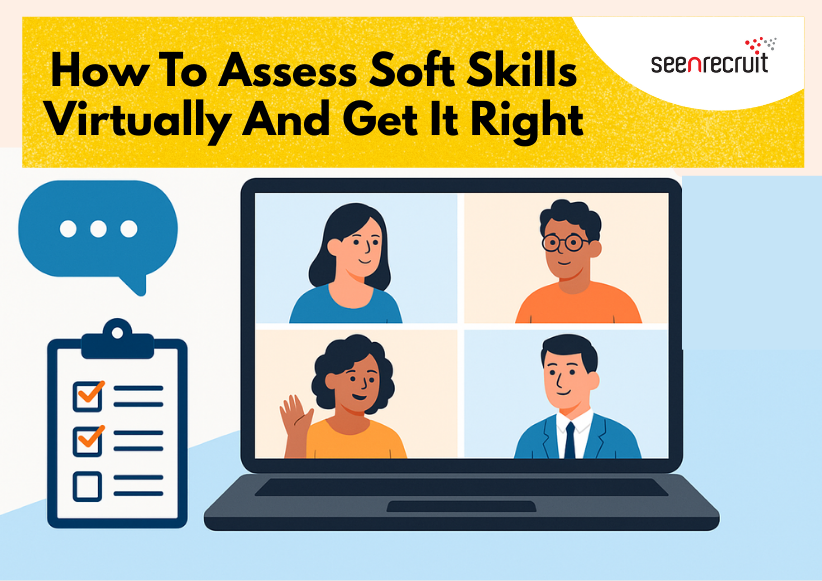How to Assess Soft Skills Virtually—And Get It Right

Assessing soft skills virtually is no longer optional—it’s essential. Let’s explore practical and effective strategies for evaluating communication, adaptability, emotional intelligence, and teamwork during online interviews and remote hiring processes. Learn how to spot the right qualities using digital tools, behavioral cues, and scenario-based questions. Whether you're a recruiter or a hiring manager, discover how to move beyond resumes and uncover real human potential—virtually and accuratel
In the age of hybrid work and global hiring, soft skills have emerged as the true differentiator. But how do you assess them—virtually, and accurately?
As workplace dynamics shift, soft skills are taking the centre stage. According to” LinkedIn’s Global Talent Trends”, 92% of hiring professionals believe soft skills are equally or more important than hard skills.
Whether you’re hiring for BFSI, Real Estate, or Tech roles, qualities like emotional intelligence, adaptability, virtual collaboration, and communication directly impact team success.
In traditional interviews, body language, in-person interactions, and informal conversations help gauge personality and soft skills. However, in a virtual setting, those cues are absent. What remains is the challenge of decoding a candidate’s interpersonal capabilities—digitally.
The good news? With the right approach and tools, virtual soft skill assessment can be not only practical but highly insightful.
Utilise the STAR method (Situation, Task, Action, Result) to assess how candidates have handled past challenges.
Ask questions like:
Look for emotional awareness, effective decision-making, and clear communication.
Simulate real-world work scenarios and evaluate how candidates would respond. These assessments uncover:
Popular tools: Harver, Pymetrics, Traitify
Candidates record their answers to predefined questions, offering insight into:
Why it works: It replicates remote communication patterns (emails, voice notes, presentations).
Host collaborative tasks or discussions over Zoom or MS Teams. Observe;
Especially useful when hiring for leadership or cross-functional roles.
Go Beyond Resume Verification. Ask referees specific soft-skill questions:
Real insights often lie in these conversations.
Tip: Train interviewers to focus on content and intent, not just presentation.
As organisations evolve into remote and hybrid ecosystems, evaluating soft skills virtually is no longer a nice-to-have—it’s essential. Companies that master this will be better equipped to build resilient, people-first cultures with high-performing, emotionally intelligent talent.
At See & Recruit, we blend technology with human expertise to help you identify not just skillsets, but mindsets. Whether you’re hiring a future CXO or a functional leader, we ensure their soft skills align with your company’s culture, vision, and long-term objectives.